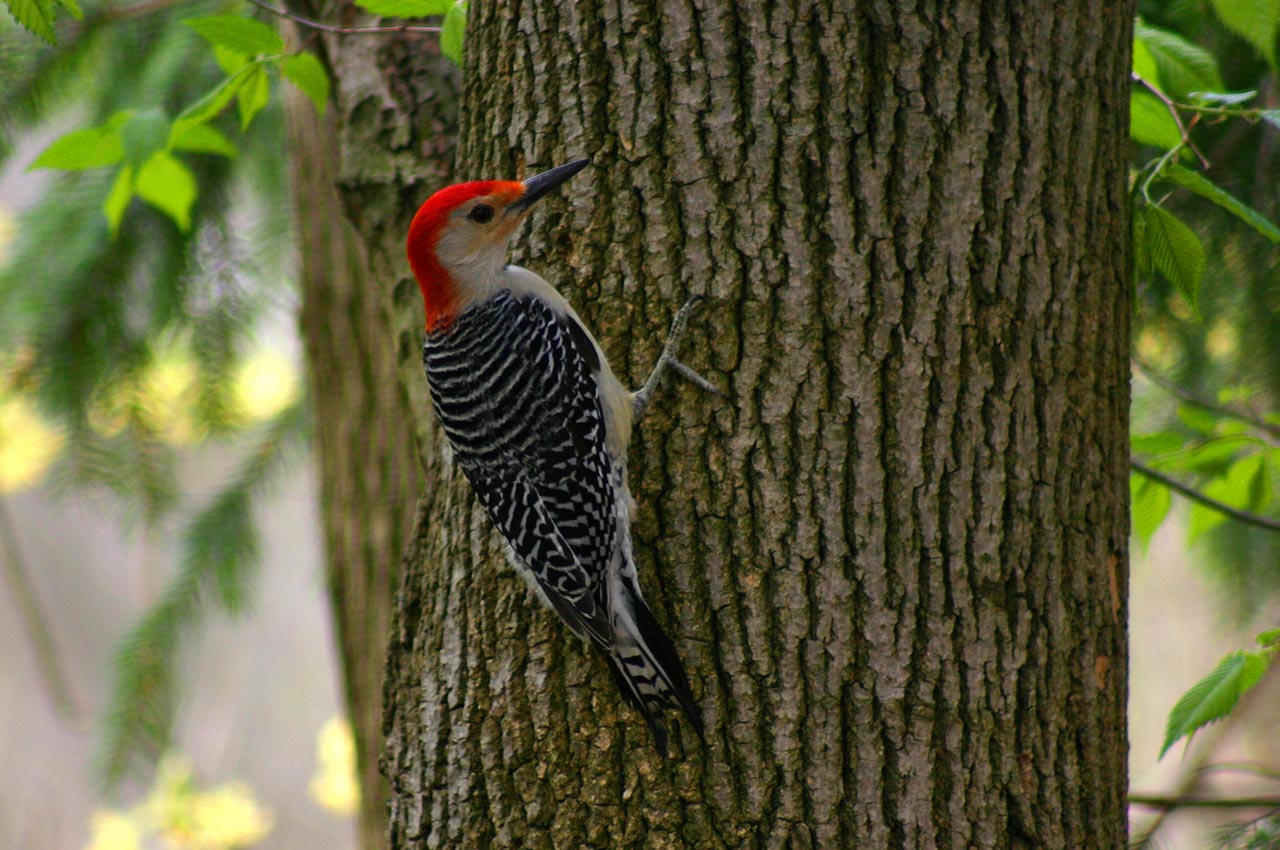Experiencing Woodpeckers in Florida Species: Habitats and Actions
Wiki Article
Unveiling the Keys of Woodpeckers: Behavior, Environment, and Extra
Woodpeckers, with their distinct behaviors and specialized adaptations, have long captivated scientists and nature fanatics alike. These exceptional birds have an array of fascinating secrets that clarified their survival methods, environment preferences, and intricate interaction methods. By revealing the mysteries bordering woodpeckers' actions and habitat options, a deeper understanding of these bird marvels arises, offering a glimpse right into their interesting world. So, what makes these birds absolutely outstanding, and exactly how do they browse their environment with such accuracy and skill? Allow's discover the fascinating world of woodpeckers and untangle the enigmatic details that make them such fascinating subjects of study.Woodpecker Actions Insights
In examining woodpecker actions, a fascinating screen of specialized abilities and adjustments emerges, clarifying their exceptional environmental niche - Woodpeckers in Florida. Woodpeckers, recognized for their unique drumming on trees, possess a variety of behavior qualities that contribute to their survival and success in their setting. One vital habits is their drumming, which serves several purposes such as interaction, establishing territory, bring in mates, and situating food sources. This balanced pecking likewise showcases their remarkable toughness and endurance, as they can hammer away constantly at high speeds without triggering harm to themselves.Moreover, woodpeckers show a distinct feeding actions characterized by their capacity to remove bugs from tree bark utilizing their specialized beaks. Their long, barbed tongues aid in recording target, while their strong neck muscle mass give stability and precision throughout pecking motions. This feeding method allows woodpeckers to gain access to concealed insect larvae and remove them with remarkable effectiveness.
Environment Preferences and Option
What elements influence the environment choices and option of woodpeckers? Woodpeckers are highly adaptable birds recognized to inhabit various atmospheres worldwide. Nevertheless, they do show choices for sure habitat qualities. One critical variable affecting woodpecker environment selection is the availability of suitable nesting sites. Woodpeckers normally favor woodlands with a mix of mature trees that supply ample chances for cavity excavation. These tooth cavities function as critical nesting and roosting websites for woodpeckers and are essential for their breeding success.Additionally, woodpeckers show a choice for habitats with a bountiful supply of food resources. They are mainly insectivorous, feeding upon beetles, ants, larvae, and other bugs found in worn out wood or tree bark. As a result, woodpeckers tend to prefer woody areas with a varied insect populace to meet their nutritional requirements.
Moreover, the visibility of dead or rotting trees is another crucial element in woodpecker environment option. These trees not only provide food resources but additionally provide ideal substrate for cavity excavation. Dead trees are necessary for the maintenance of healthy and balanced woodpecker populations, as they play an essential duty in the woodpeckers' life process and ecosystem characteristics.
Feeding Practices and Diet Regimen Composition
Woodpeckers show a specialized feeding behavior concentrated on foraging for insects within different environments. Their diet mostly includes insects such as beetles, ants, caterpillars, and spiders, which they situate by tapping on tree bark and paying attention for the audio of movement inside. Woodpeckers utilize their solid beaks to drill into the timber and their lengthy, barbed tongues to extract victim from gaps. Along with bugs, woodpeckers additionally consume tree sap, fruits, nuts, and seeds, adding range to their diet regimen depending on the period and schedule of food sources.The foraging methods of woodpeckers are well-adapted to their arboreal way of life (Woodpeckers in Florida). Their capability to dig deep into wood not only supplies them with food but likewise assists in producing nesting tooth cavities and establishing areas. Woodpeckers play a vital function in preserving the health and wellness of woodlands by regulating insect populaces and helping in the decay of wood. Understanding their feeding habits and diet regimen make-up is necessary for preservation efforts aimed at maintaining these one-of-a-kind and useful Recommended Site birds.
Drumming Seems and Communication
Making use of fast drumming noises on numerous surface areas, woodpeckers employ a distinct type of communication to signify territory borders and draw in mates. This drumming actions is not only a method of communication yet additionally works as a means for woodpeckers to establish their visibility within a specific area. The strength, review rate, and pattern of the drumming can communicate important info to other woodpeckers around.Woodpeckers use drumming sounds to announce their visibility in a region and to advise off potential trespassers. The loud and repeated nature of the drumming functions as a clear signal to various other woodpeckers that the area is already asserted. This assists in lowering conflicts and decreasing physical conflicts in between individuals.

Survival Adaptations and Specialized Anatomy

Final Thought
To conclude, woodpeckers show special habits, such as drumming audios for communication, and have specialized makeup for survival in their selected habitats. Their feeding behaviors and diet plan composition better demonstrate their flexibility to different environments. By recognizing these elements of woodpeckers, scientists and guardians can better secure and preserve these remarkable birds and their environments.Report this wiki page